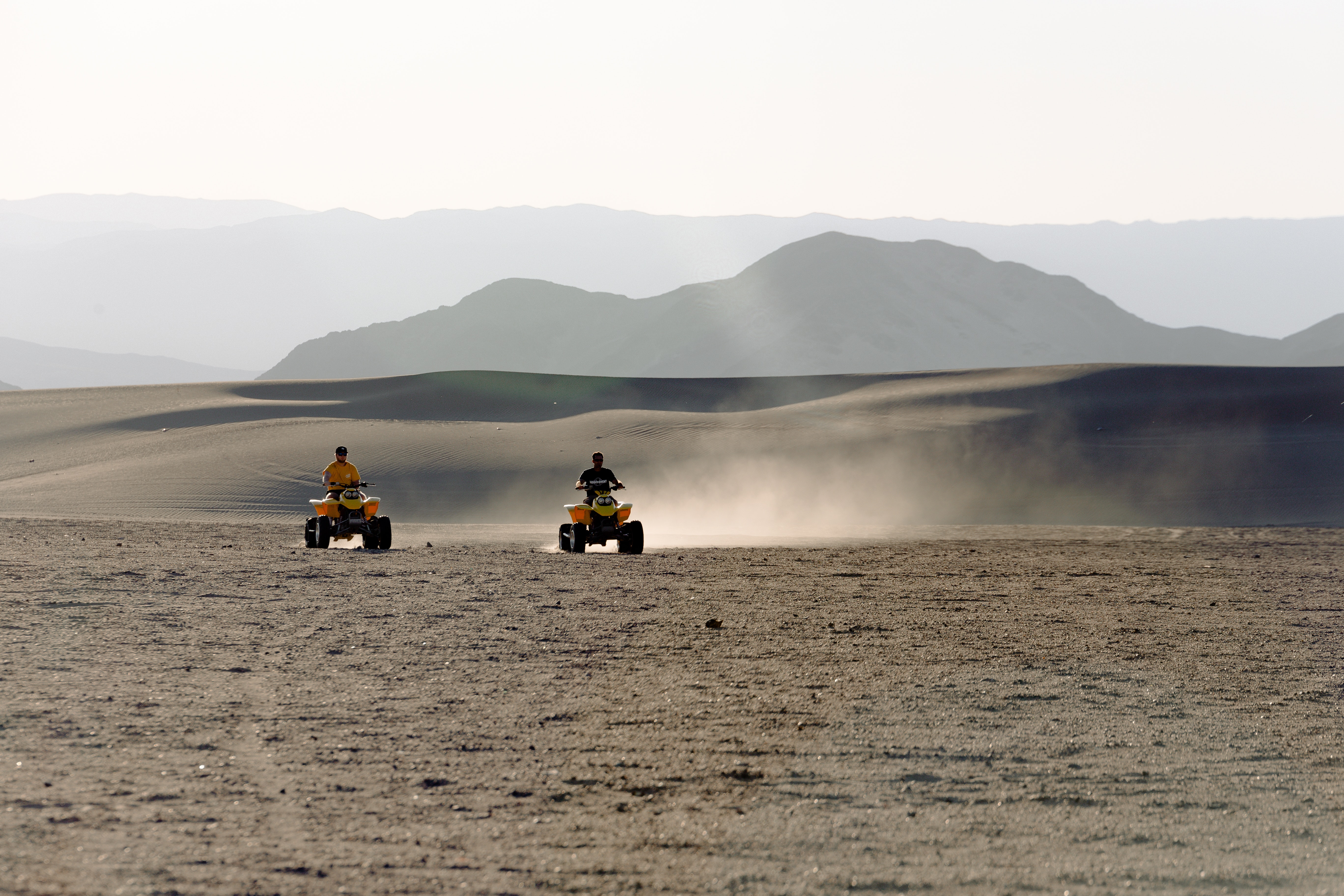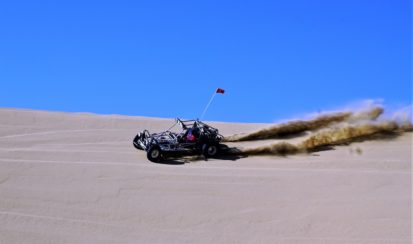ATVs and UTVs are similar in acronyms but different in purpose, so let's break down their differences.
ATV
Straight to the definition, an ATV stands for an all-terrain vehicle. It's a vehicle that is motorized off-highway and travels on four low-pressure tires. The seat is designed to be straddled by the operator and has handlebars for steering control.
They can also be known as "quad" or "four-wheeler." Generally, there is only ever one rider operating the vehicle. While at their base they're all considered ATVs, it tends to get confusing when you break down the many varieties of ATVs, so let's get into that.
Wheels and Tires
The ATV vehicle that can be considered a "quad" is a three-wheeler. This means your typical four-wheeler still falls under the umbrella of an ATV. All tires are kept at a lower pressure than standard cars or UTV tires. Low tire pressure is meant to allow the sidewall to flex and the rim can pinch between rocks or other trail debris. If the pressure is too high, something as small as a rock can tear a hole in the sidewall of the wheel.
Steering and Handling
An operator steering an ATV uses handlebars. To accelerate the vehicle forward you use a throttle that has thumb controls. On some ATVs, you can operate the controls by twisting the handles.
Braking
Depending on what type of ATV you're handling, there can be a handle or foot pedal to brake.
Cost
ATVs are much more budget-friendly than UTVs. So if you're looking for a fun adventure, test out ATVs first before opening the bank for a UTV purchase.
UTV
UTV is short for utility terrain vehicle. They are used more for work-related scenarios. More than one passenger can ride along in one as well. UTVs are bit larger in size than ATVs, because they are commonly used to haul equipment in more practical scenarios than a truck would.
Some other names include side-by-sides, recreational utility vehicles, multi-use vehicles, off-road vehicles, etc.. Just like with ATV, here are some further looks at a UTV.
Wheels and Tires
Similar to a car, a UTVs has four standard wheels. They can also have more specialized tires for specific jobs.
Steering and Handling
These vehicles are actually much faster than ATVs. However, they are not as quick and light in movement. Again, just like a car, to maneuver this vehicle you use a steering wheel.
Braking
Both braking and accelerating are used by foot pedals.
Cost
Because UTVs are used for more work-related jobs and can handle a bit more weight and haul than an ATV, they come at a price. You can modify a UTV the way you like and raises the price even more.
So What's the Difference?
To compare the vehicles, ATVs are used for more recreational fun and UTVs are used more for work purposes. ATVs tend to be lower in price and are meant for single riders. UTVs can cost the bank a bit more but can do more for you. Overall, both are unique vehicles that make for a fun off-road ride.





